Raleigh, NC Pollen and Allergy Report for Summer 2023
Pollen Allergy Trends in Raleigh, NC
When is pollen lowest in Raleigh, NC?

February
Lowest month total PPM
Avg. PPM
When is pollen highest in Raleigh, NC?

April
Highest month total PPM
Avg. PPM
How does pollen in Raleigh, NC compare to North Carolina?
Raleigh has a lower average PPM than the state of North Carolina.
Raleigh yearly avg PPM:
North Carolina yearly avg PPM:
How does pollen in Raleigh, NC compare to the USA?
Raleigh has a higher average PPM than the USA.
Raleigh yearly avg PPM:
USA yearly avg PPM:
Is pollen worse this year in Raleigh, NC?
Spring 2023 was about the same as 2022.
Spring 2023 PPM:
Spring 2022 PPM:
Average PPM in Raleigh, NC
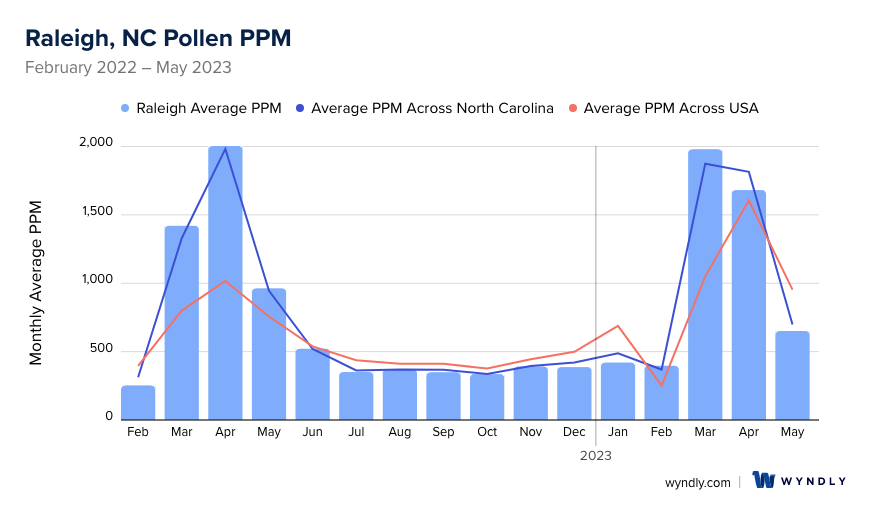
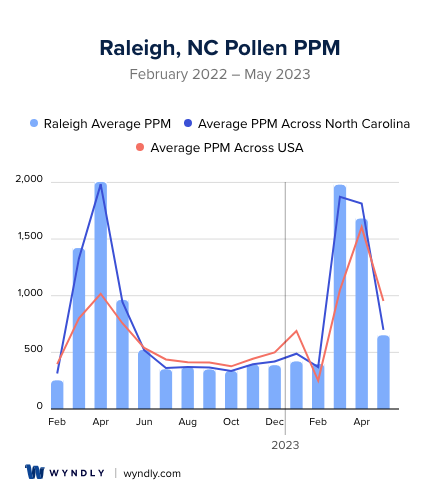
Raleigh, NC Pollen and Allergy Breakdown by Month
Grass
When is grass pollen highest in Raleigh, NC?
April has the highest grass pollen in Raleigh, NC with an average PPM of
When is grass pollen lowest in Raleigh, NC?
December has the lowest grass pollen in Raleigh, NC with an average PPM of
Tree
When is tree pollen highest in Raleigh, NC?
March has the highest tree pollen in Raleigh, NC with an average PPM of
When is tree pollen lowest in Raleigh, NC?
October has the lowest tree pollen in Raleigh, NC with an average PPM of
Weed
When is weed pollen highest in Raleigh, NC?
April has the highest weed pollen in Raleigh, NC with an average PPM of
When is weed pollen lowest in Raleigh, NC?
February has the lowest weed pollen in Raleigh, NC with an average PPM of
Raleigh, NC Pollen Monthly Breakdown by Pollen Type
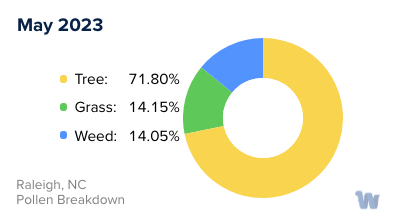
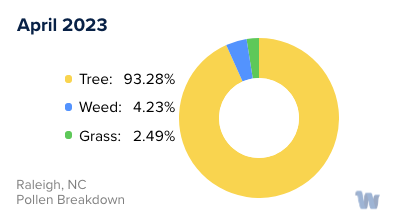
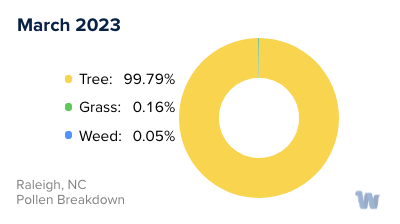
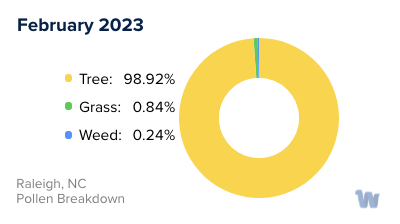
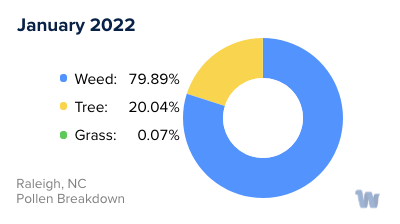
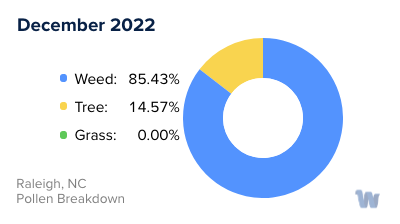
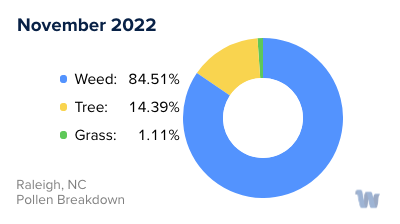
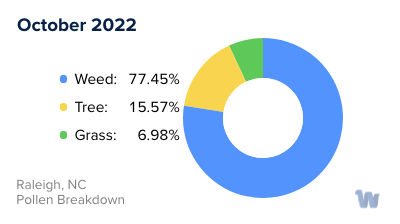
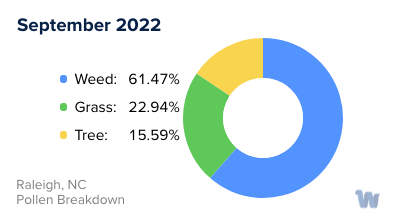
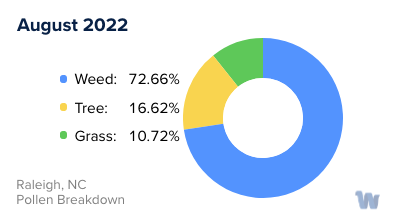
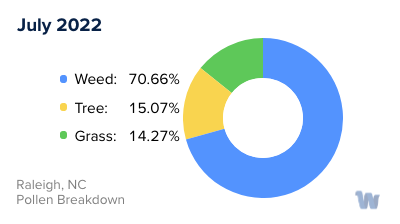
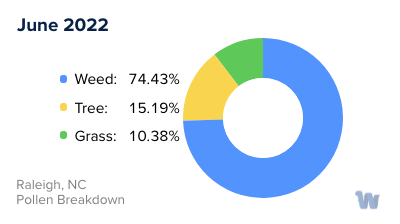
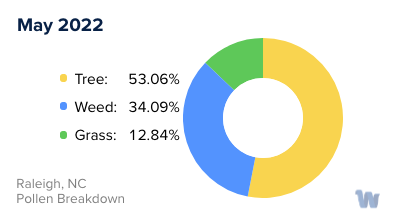
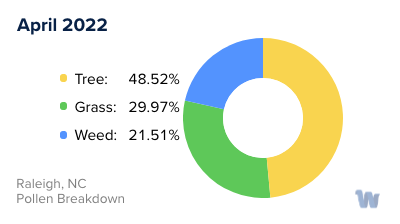
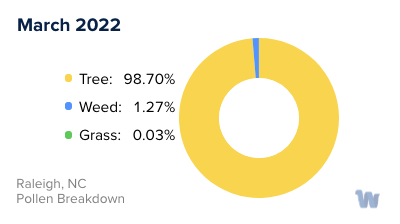
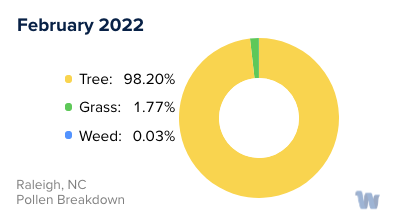
Pollen and Hay Fever in Raleigh, NC
With the arrival of spring and summer in Raleigh, North Carolina, comes an increase in pollen levels, leading to a rise in the cases of pollen allergies and hay fever. This city, renowned for its lush greenery and abundant plant life, unfortunately becomes a hotbed for seasonal allergies due to the variety of pollen in the air.
Pine, oak, and hickory are among the prominent trees that contribute to the pollen count in Raleigh. In particular, pine pollen is notorious for the yellow dust it produces, covering the city in a distinctive blanket during peak pollen season.
The pollen season in Raleigh generally begins in late February or early March, with tree pollen being the primary allergen. The highest pollen counts usually occur in April, and the season extends until early June. The pollen from the aforementioned trees, especially pine, is the most prevalent during this time.
Following the tree pollen season, grass pollen takes over as the main allergen. This season usually starts in late May and lasts until July. The grasses contributing to pollen count include Bermuda grass, ryegrass, and Kentucky bluegrass.
As the year progresses, the focus shifts to weed pollen, which peaks in late summer and fall. Weeds such as ragweed, lamb’s quarters, and plantain are the primary sources of allergenic pollen during this time.
Despite the challenges, the citizens of Raleigh manage to find a way to coexist with this annual phenomenon. Understanding the types of pollen and their respective seasons helps individuals anticipate and navigate their allergy symptoms better. Remember, knowledge is power, and in this case, it’s the power to enjoy the natural beauty of Raleigh while managing the inconveniences caused by pollen allergies and hay fever.

